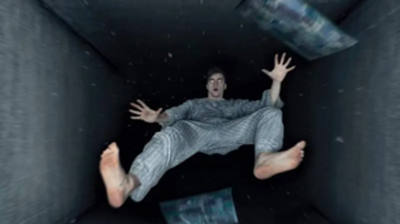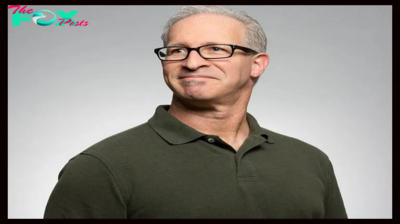Entertainment
AMERICAN THEATRE | What Saved SCR’s Paula Tomei Coming Again for 4 A long time
Paula Tomei.
This month Paula Tomei packs up her desk at South Coast Repertory after greater than 4 many years on the Southern California regional powerhouse. She began out within the subscriptions division in 1979, not lengthy after the theatre made a momentous transfer to its present Costa Mesa location, and later grew to become its first managing director. In that submit she helped develop a lot of SCR’s signature festivals, working alongside co-founders Martin Benson and David Emmes, whose distinctive artistic-producing partnership helped kind the theatre’s distinctive, new-play-focused model.
Emmes (who can also be Tomei’s husband) and Benson formally stepped down from day-to-day management in 2011 however by no means totally left the constructing, whilst successive inventive administrators—first Marc Masterson, now David Ivers—have joined the employees. With Tomei’s departure, and the current hiring of the Winery Theatre’s Suzanne Appel as her alternative, is it lastly the tip of an period at South Coast Rep?
I spoke to Tomei earlier this summer season about working at her hometown theatre, altering attitudes towards subscriptions, and hold playwrights writing for the theatre.
ROB WEINERT-KENDT: I learn that your diploma was in economics. So what drew you to the theatre? Had been you all the time doing it on the aspect?
PAULA TOMEI: It began in highschool. I had an exquisite English trainer and drama trainer who was a mentor and a pal until the tip (she handed away a pair years in the past now), and actually she gave us the category—which means, she was the director, however we had been answerable for promoting tickets, advertising the present, getting the phrase out, constructing costumes. We did all of it. That’s what an important arts program means that you can do: expertise all the things.
I didn’t understand how a lot of the bug I had until I went to UC Irvine as a organic Sciences main, considering I’d be a dentist. Two years in natural chemistry informed me I wasn’t going to be a dentist. So I segued into economics, as a result of on the time, UCI I didn’t have a enterprise college, so I assumed, effectively, it’s shut, and I can nonetheless spend a whole lot of time within the arts, which I like. So I used to be over on the tremendous arts aspect of the campus so much; I took a whole lot of dance programs, I had lighting design, stage administration, all of the theatre issues that I cherished.
Was South Coast Rep in your radar then?
The primary play I noticed there was Mom Earth, I feel after I was in eighth grade. In highschool, I used to be very fortunate; there have been 30 subscriptions that the varsity purchased, so we bought to go see performs. Our trainer was truly a member of the corporate when it was down in Newport Blvd. So we noticed all the things; we ushered. It was a improbable expertise. In school, I grew to become a pupil subscriber, and I began working right here within the subscriptions division in 1979.
That was an enormous yr for the corporate, proper after they moved to the placement they’ve been in ever since, in Costa Mesa, throughout from South Coast Plaza. Was the mall already there on the time?
Gosh, yeah—we grew up using our bikes to the mall, to Sears and Macy’s and Woolworths. It’s an entire different world now, however that was a hangout spot.

The Eighties can also be when South Coast pivoted its focus to new performs, which has since turn out to be what it’s greatest recognized for. What was it like in these days?
I used to be working in subscriptions and it was booming. That they had already outgrown the areas on this constructing. There have been storage rooms that grew to become places of work—they underestimated the increase in subscriptions after they moved from Newport Blvd. to right here. It simply took off, and so they couldn’t rent folks quick sufficient to assist course of subscriptions. It was an important place to be taught. I principally grew up watching this theatre, in many alternative interior iterations, creating work alongside the best way, particularly the brand new performs, which is what saved me right here. It was too good of a chance to go away. To satisfy with dwelling playwrights? Come on! It was the very best.
What was behind the pivot to new performs?
New work was one thing that South Coast Repertory all the time did and was inquisitive about, and it actually took off right here within the early Eighties. There was planning happening as a company round new performs and assist them and take dangers, and the season planning mirrored newness commonly. There have been applications early on, just like the Hispanic Playwrights Venture, after which what ended up turning into the Pacific Playwrights Pageant. All of them rolled out as a approach to assist the brand new work—and as a response, in some methods, to David and Martin eager to get performs forward of another theatres that had been in line. You’re in comPetitors for some performs in Southern California, and this was a approach to work round that. That was the impulse: to construct out these applications to assist writers and hold them writing for the theatre, not only for Hollywood. It’s tougher now than ever, proper? They get scattered away so quick with all of the streaming companies and all the things else. It was a technique to maintain playwrights writing for the theatre.
Somebody in a bit I learn known as you “a fierce protector of the model” of South Coast Rep. How would you outline what that model was? And do you suppose it offers the theatre a aggressive edge?
It’s such an fascinating query to speak about now. I feel the model is comparable, however the work has modified and the mannequin is altering, when it comes to how a lot work we’re truly doing versus what we had been doing pre-pandemic, for all the explanations. The model itself was in some methods simpler, as a result of we had two distinct seasons: the bigger Segerstrom Stage, the smaller Argyros Stage. Not that the classics couldn’t happen within the smaller area—they may, however predominantly they had been on the Segerstrom Stage, versus new work, which could you would possibly see extra on the Argyros Stage. I’d say that the model now is identical mixture of performs, however there’s just a little extra circulate in what that may appear to be when it comes to classics, or modern classics, no matter you need to name them. I do suppose on the core of it, what continues to be very robust and is a strategic benefit, is the deal with new work. We name it our inventive analysis and improvement, R&D. That has not modified.

One factor I’ve heard theatre leaders discuss since theatres reopened is that the hits are a lot larger and the misses rather more devastating—the extremes are extra excessive. I fear about what which means for brand new performs and the room they should take dangers and fail. Have you ever seen that very same development?
Completely. Innovation and danger and the event of the brand new is crucial to the way forward for our artwork kind, and it’s essential to South Coast Repertory and our mission. However the thought which you could program one thing that folks will come to—I nonetheless don’t know if that’s true or not. I imply, there are moments of serendipity the place you’re considering, “Oh, good timing, this play wants to return again now,” or, “This musical must be performed proper now—we’ve bought the right group to return collectively and the alchemy is there, and we’re going to do it,” and also you hope that can resonate. However we’ve by no means been in a position to choose performs that we knew would promote. I imply, that’s not likely what we’ve been making an attempt to do. It’s nice when it occurs. Proper now, the problem we discuss with the audiences we’re making an attempt to draw is: Do they even comprehend it’s a brand new play? Possibly? I imply, we inform them it’s a brand new play. Okay. However do they know when one thing isn’t new? It’s a generational factor that everyone’s making an attempt to determine: What does convey them in? I feel that what brings folks in is compelling tales that resonate in your life and the world, and are effectively informed, effectively made.
I’ve heard this from different leaders—that this emphasis on the brand new, even simply placing a radical spin on a well-worn traditional, typically assumes that audiences are seasoned theatregoers who’ve all seen the classics dozens of instances and are craving newness for its personal sake.
So as to add to that: The faculties, in some circumstances, aren’t actually in sync with us when it comes to our programming versus what they’re educating. We discuss to educators and wrestle with the truth that they’re on the brink of retire, and so they’re not so certain their successors are going to step up and educate the work in the best way that they did. It’s a generational shift for them too. So it’s on many ranges proper now.
A query I all the time ask of us who’ve been round for some time is, what has modified probably the most because you began—not simply at your theatre however within the theatre discipline usually?
You’re asking the exhausting ones! What’s modified? Clearly, the notion of subscribing. The Technology that I grew up in, that’s what you probably did: You simply purchased a sequence of issues, you subscribed to a paper. It was a daily prevalence. Not a lot anymore. I’d say that’s one of the vital difficult issues to wrestle with, and take into consideration what it means as you develop audiences and join along with your group. This group has grown. It was very entrepreneurial when it began, and now it’s a grown-up group. It’s new households, new folks. It additionally was a given that you just had companies in your group and you’ll have company folks serving in your board. We had computerized relationships with these firms in Orange County that had been attracting staff, and one of many huge sights was the humanities.
The most important shift is that all the things’s obtainable in actual time on-line, streaming or in any other case, the leisure choices. So what does theatre turn out to be now? We used to suppose, “Oh, talkbacks, aren’t they nice?” Audiences appreciated them as a approach to have interaction with artists, and a few nonetheless do. However there are others who need extra, and we’ve bought to find what that extra is and the way they will have interaction with the artwork. This goes again to audiences once more, and what’s going to attract them in and hold them coming again multiple time. These shifts in the best way we obtain artwork are vital over the many years since I got here.
Final yr I talked to Alan Brown at Wolf Brown, an arts consulting agency, and he put a finer level on the comPetitors from streaming, which is that there’s a lot good drama to observe at house, so it’s a tougher raise to get folks to return out to sit down for a play. Musicals and spectacles and immersive experiences might have an edge, as a result of you’ll be able to’t get these on Netflix. It looks like that development would have an effect on a new-play theatre like South Coast Rep, proper?
You convey up a extremely good level: It’s performs. We grew up in a time once we understood what performs had been. You didn’t go in and get barraged by music and lights and lasers. A few of that stuff is actually good, and a few of it for me simply doesn’t resonate. However that’s the problem with the Technology that’s going to these occasions, after which coming to see a play. What’s that have? How will we domesticate them in order that they know what to anticipate, and might truly really feel one thing after they see it? Hopefully, it’s actually good theatre; it needs to be a extremely good play. Musicals are positively being cited as a approach to get folks in, however you’ll be able to’t do a gentle weight loss plan of musicals.
They usually’re costly. I do know you latterly did a brand new musical, Prelude to a Kiss, which SCR initially produced as a play again in 1988.
That play was one of many first issues that was commissioned and produced out of the collaboration laboratory within the early ’80s, so it’s come full circle.
I additionally bear in mind having fun with the play Kimberly Akimbo at South Coast Rep again in 2001. Now that’s a musical too.
Oh, what an exquisite play that was. It’s a lot enjoyable to see it come full circle, like Prelude. I see that Kimberly Akimbo is gonna exit on tour, so I’m truly gonna be capable of see that throughout the road, when it comes right here as a part of the Segerstrom Middle’s Broadway sequence.
Speak about full circle! Wanting again at AT’s protection of SCR, it seems like we by no means did an enormous sit-down interview with the inventive leaders, as we regularly did with the likes of Adrian Corridor or Oskar Eustis. Most of our protection of SCR has been concerning the performs and the writers that began there, and the new-play festivals.
That’s nice of you to watch, and thanks—as a result of it has by no means been about us. It’s all the time concerning the work. That was instilled by way of David and Martin. We discuss commonly concerning the tradition of “we,” which which means all of us get the work performed collectively. That features the board. It’s that shared imaginative and prescient and pleasure round new performs, and all the things else we do, that lifts us, and has gotten us to the place we at the moment are, and can proceed to raise us sooner or later.
Rob Weinert-Kendt (he/him) is the editor-in-chief of American Theatre.
Associated
-

 Entertainment3h ago
Entertainment3h agoBeyonce to Headline Halftime Show During NFL Christmas Game
-

 Entertainment4h ago
Entertainment4h agoDid You Correctly Answer This Poughkeepsie Related Jeopardy Question?
-

 Entertainment9h ago
Entertainment9h agoWhat to Know About Denzel Washington’s Gladiator II Character
-

 Entertainment10h ago
Entertainment10h agoChanges Made in New York to “Men Working” Construction Signs
-
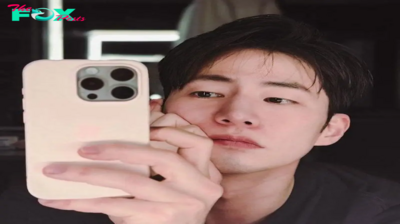
 Entertainment19h ago
Entertainment19h agoRemembering Song Jae-rim: A Look at His Best Movies and K-Drama Performances
-
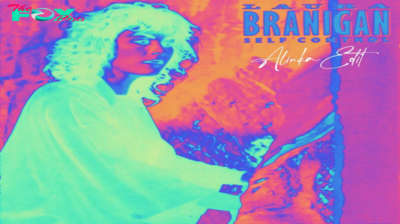
 Entertainment1d ago
Entertainment1d agoAmerica On CoffeeWe’re simply inviting you to take a timeout into the rhythmic ambiance of our breakfast, brunch and/or espresso alternatives. We’re pleased everytime you cease by.SELF CONTROL
-

 Entertainment1d ago
Entertainment1d agoOrange County Choppers Is Ready For Its Big Comeback
-
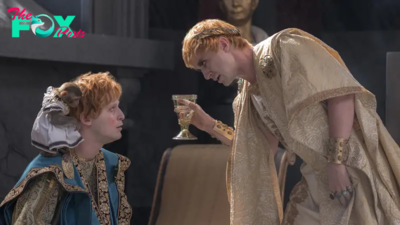
 Entertainment1d ago
Entertainment1d agoThe Real Story of Geta and Caracalla, the Roman Brother Emperors in Gladiator II
